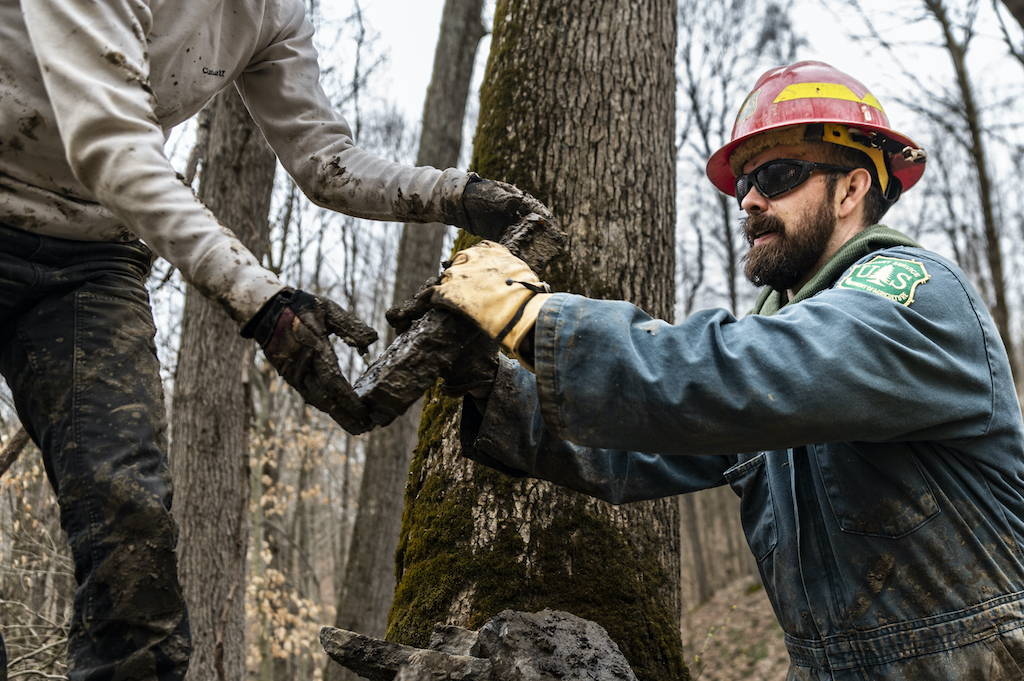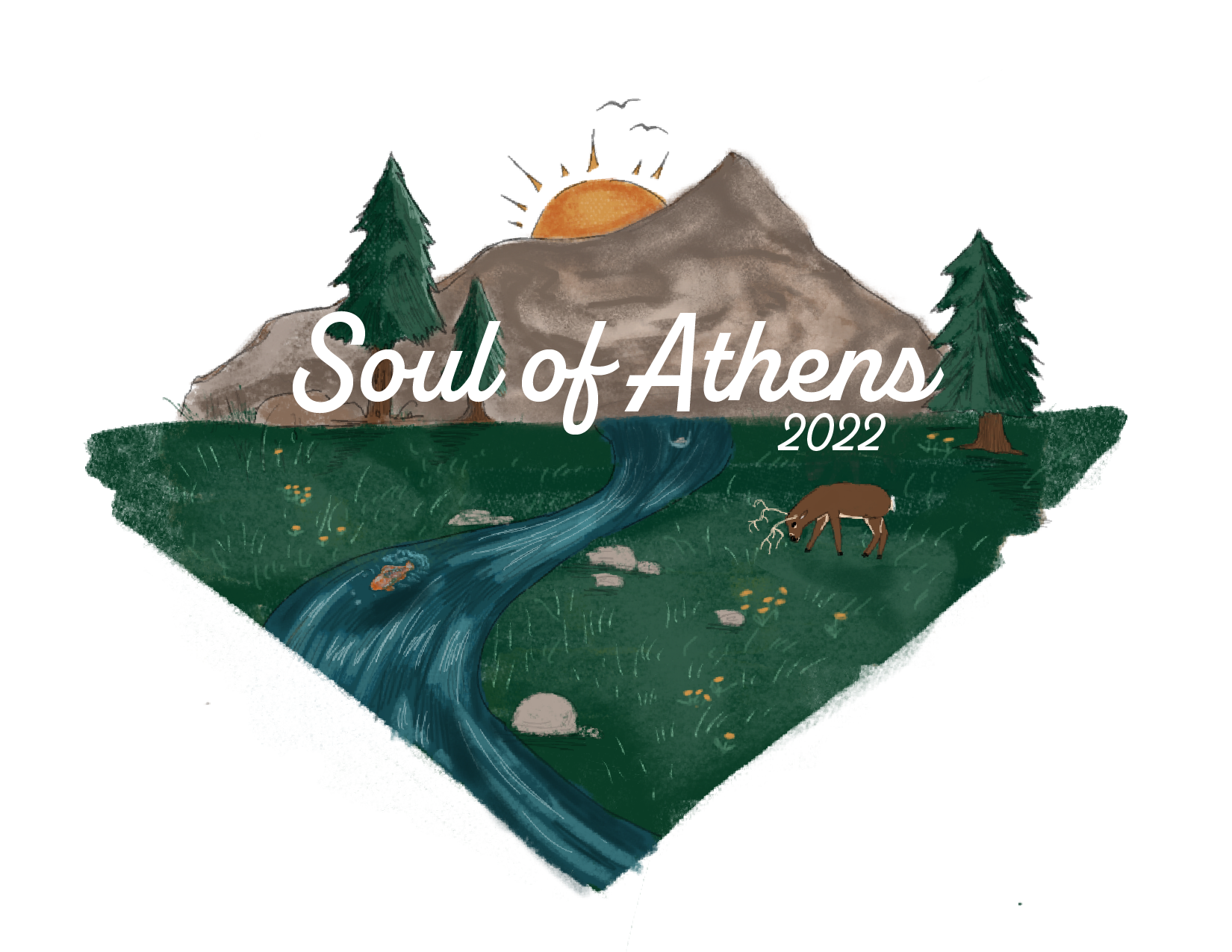Over the past century or so, an ambitious undertaking has been ongoing in Athens and surrounding counties: the Wayne National Forest. The only National Forest in Ohio, the Wayne was begun following the United States’ government realization of the extent of the deforestation in the eastern United States. Being an especially devastated, barren area, southern Ohio was targeted for restoration efforts.
Restoring Wayne National Forest
Story by Sam Warren
Since the first parcel of land was acquired by the Federal government in the 1930s, the Wayne has served as a beacon of hope for restoring Southeast Ohio’s once-flourishing forest ecosystems. Our forests still have a long way to go before they are the healthy, thriving biomes that they were for thousands of years before severe human exploitation. However, where we are today is still leaps and bounds better than the barren wasteland of a hundred years ago.
Not only does the Wayne National Forest serve as an important example of successful restoration, conservation, and land stewardship, it also affords the public incredible access to deep forest in the seemingly untouched rolling hills. While strolling along an isolated stretch of trail and listening to the chirping of birds as endless trees creak in the wind, it is hard to imagine a time when the land was a windswept, barren wasteland.
The fact that there is not much reforestation going on in the Wayne today serves as a testament to its success. Trees once again blanket the hills, and rather than planting more on the massive scale seen in the mid-1900s, efforts are now taken every day to preserve, protect, and help ensure that our forests flourish for this generation and many to come.
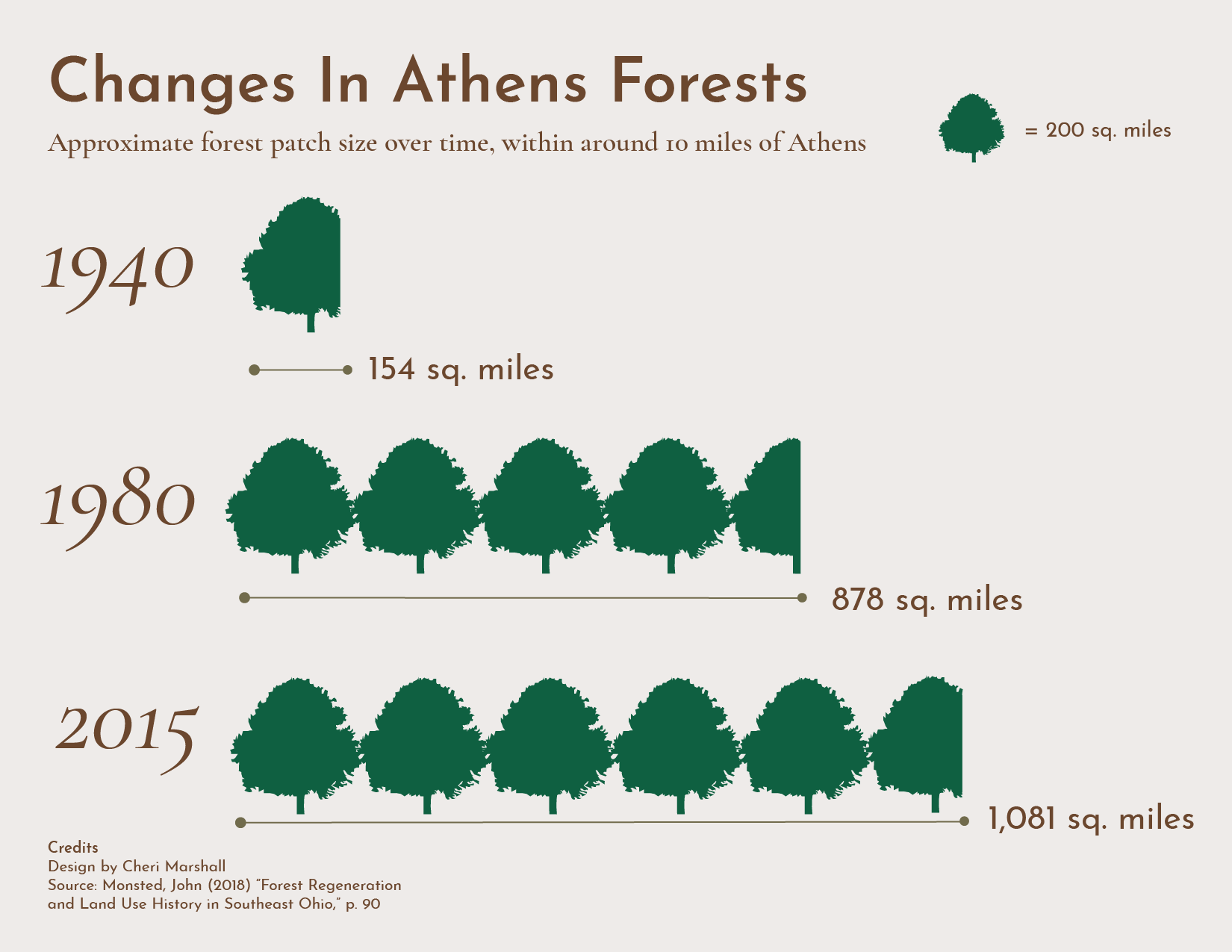
Baileys Trail System
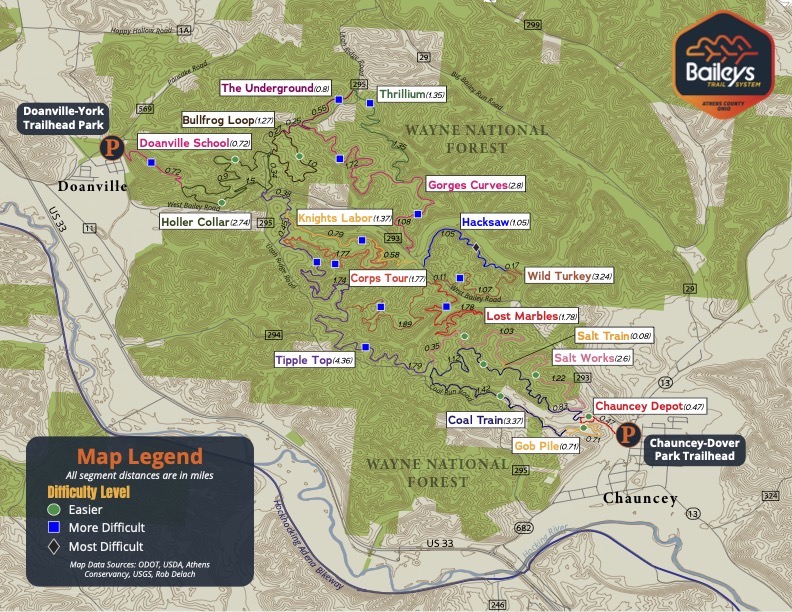
Source: baileystrailsystem.org
Snaking through the trees of the Wayne National Forest is the Baileys Trail System, thirty-one miles of purpose-built trail that serve as a prime example of the access to public lands that is afforded to communities surrounding the Wayne. With millions of dollars in funding already secured and plans to build over eighty miles of trail in total, the Outdoor Recreation Council of Appalachia (ORCA) sees the Baileys as an amazing opportunity for the communities and people of the region.
Jessie Powers, Executive Director of ORCA, knows that the Baileys would not be the success that it is today without dedicated citizens. “The Baileys Trail System, from its inception, has been a community-driven project. It’s really taken off and has great grassroots here in Appalachia, with real people on the ground,” Ms. Powers said. Maintaining the trails, which can mean everything from clearing branches to repairing dangerously muddy spots, is up to passionate volunteers and employees.
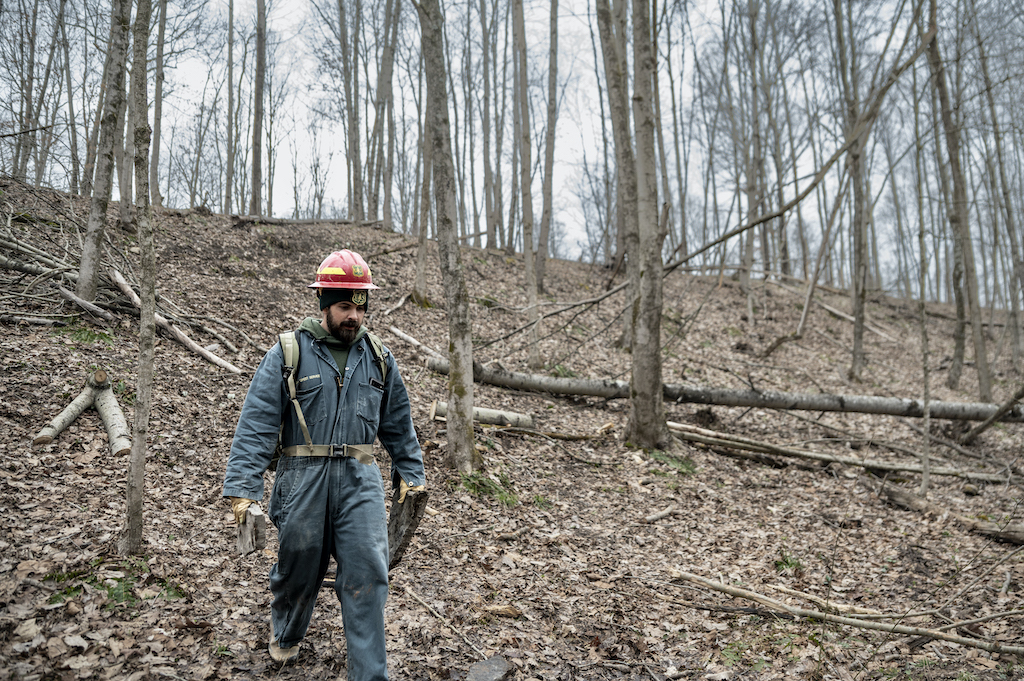
Photo by Sam Warren
Josh Keenan, Volunteer Coordinator with the Wayne National Forest, works on bringing rocks and tools to a work site on the Baileys Trail System within the Wayne.
Jasmine Facun, Baileys Program Assistant at Rural Action, has seen the success of the project firsthand as it has grown over the years. “Thousands of people have already been enjoying the Baileys Trail System. It’s really amazing to just see so many locals, people from around Athens and beyond, coming out here to enjoy the trail system”.
These thousands of visitors have been flocking to the region to hike and bike on the Baileys, or to take advantage of ecotourism opportunities like rock climbing and paddling on the nearby Hocking River. “We’re really talking about utilizing existing assets to develop our economy, to improve our economy,” Ms. Powers said. “We are suffering from decades of underinvestment. When you’re rural and sparsely populated, it’s really hard to organize and secure the level of investments that are appropriate to maintain just basic infrastructure.”
We heard from Jasmine Facun, Baileys Program Assistant at Rural Action, and Jessie Powers, Executive Director of the Outdoor Recreation Council of Appalachia on what the Baileys is, and its lasting benefits to Southeast Ohio.
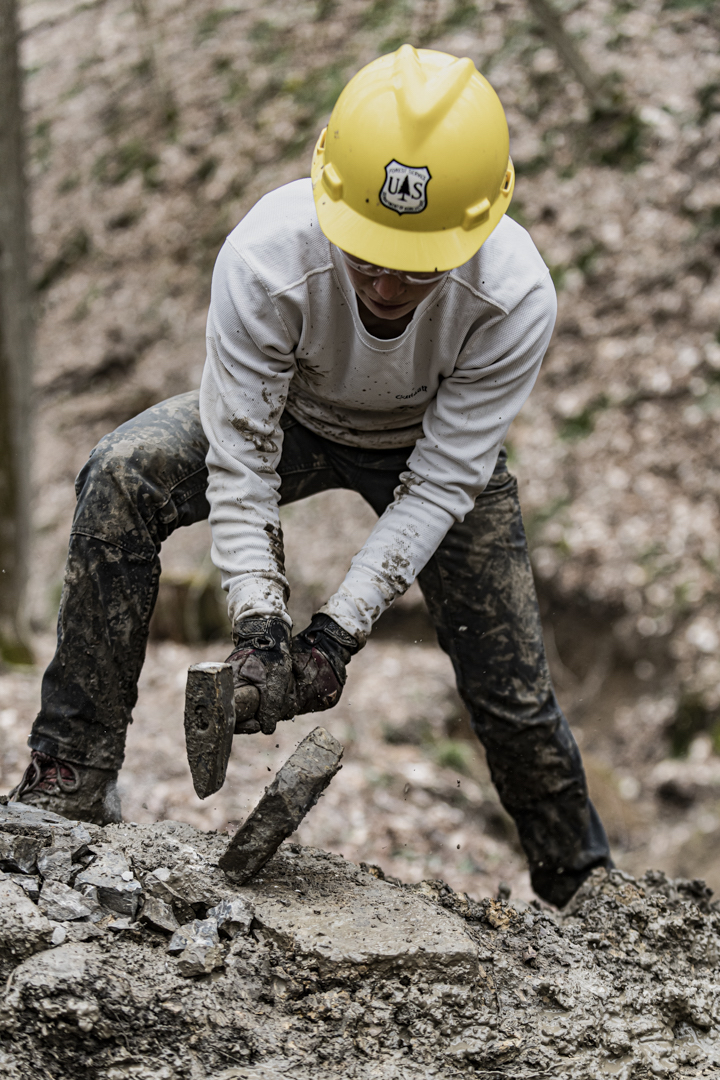
Photo by Sam Warren
Elle Dickerman, Sustainable Recreation Manager with Americorps, works on breaking rocks as part of armoring a trail in the Wayne National Forest.
“I think of the Baileys as a reimagination of what it means to be a natural resource.”
By placing trailheads in underdeveloped towns such as Chauncey and Doanville, businesses such as outfitters, guides, restaurants, lodging, and other such commodities related to tourism have already begun to flock to the region. Moreover, it has become a symbol of the importance of outdoor recreation to the success of Southeast Ohio and represents the reclamation of our forests as a sustainable asset to promote growth. In a region that has long relied on an economy of extraction relating to coal, iron, and timber, this is a serious development.
For these reasons, Ms. Powers has described the Baileys and surrounding initiatives as a “catalytic investment”, and only the beginning of a new era regarding the potential of outdoor recreation as an important asset in the development of Southeast Ohio’s economy.
Drawing on the history and heritage of the region, Baileys prominently features trails with names like “Coal Train” and “Salt Works”, nods to the industries of the past that brought life and prosperity to the hills and hollers of Southeast Ohio. In the words of Ms. Facun, “…we’re just at this point where we want to go from here and move forward, not look back to the past in any sort of critical way; more just make the best of the situation we have now. We’re very proud of our heritage here”.

Photo by Sam Warren
Jessie Powers, Executive Director of the Outdoor Recreation Council of Appalachia, surveys a work site on the Baileys Trail System within the Wayne National Forest.
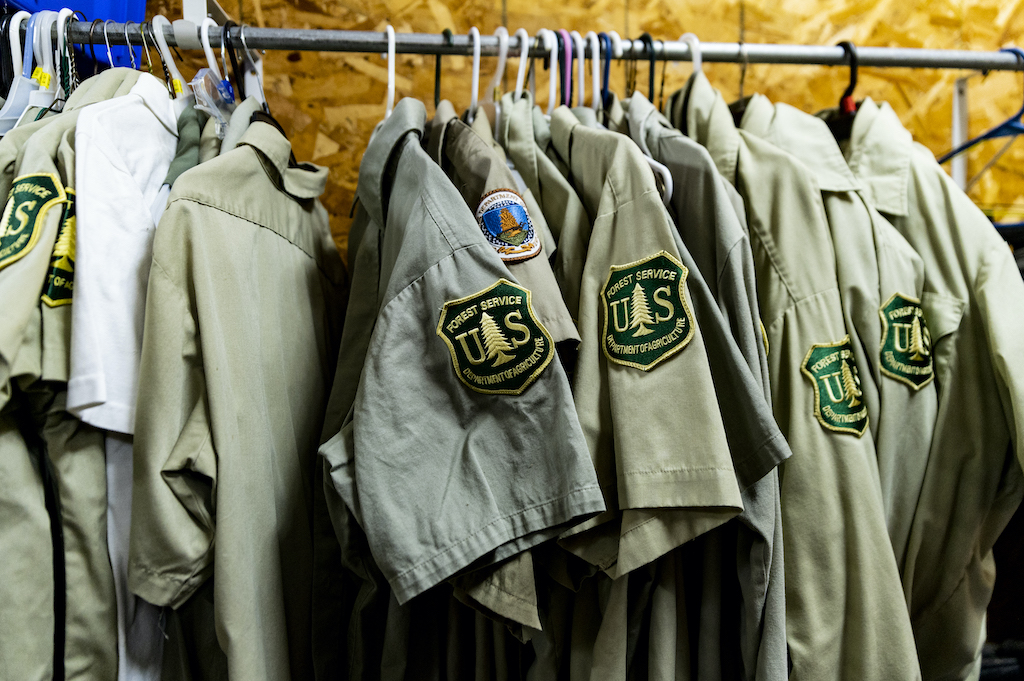
Photo by Sam Warren
United States Forest Service uniforms hang in storage at the Wayne National Forest facility off of US Route 33 in Athens County, Ohio.
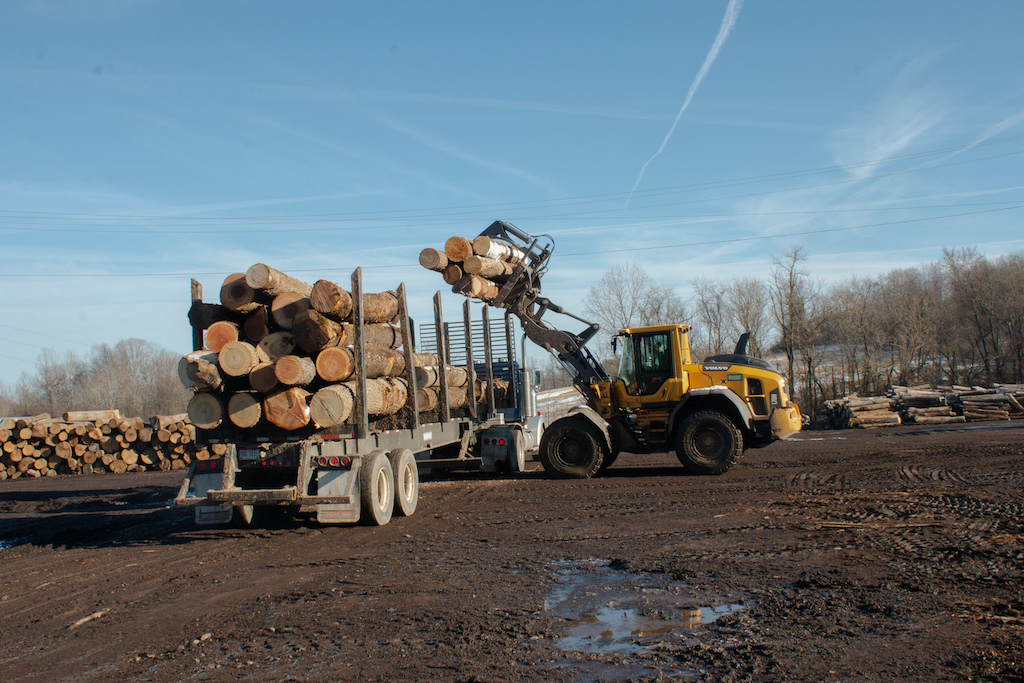
Crownover Lumber
Sustainable Logging
Crownover Lumber is located in McArthur Ohio near Lake Hope. It has been operating since 1954 and has seen many owners and many advances since its opening. Crownover Lumber orchestrates the chopping and shipping of the trees to their facility, and…
